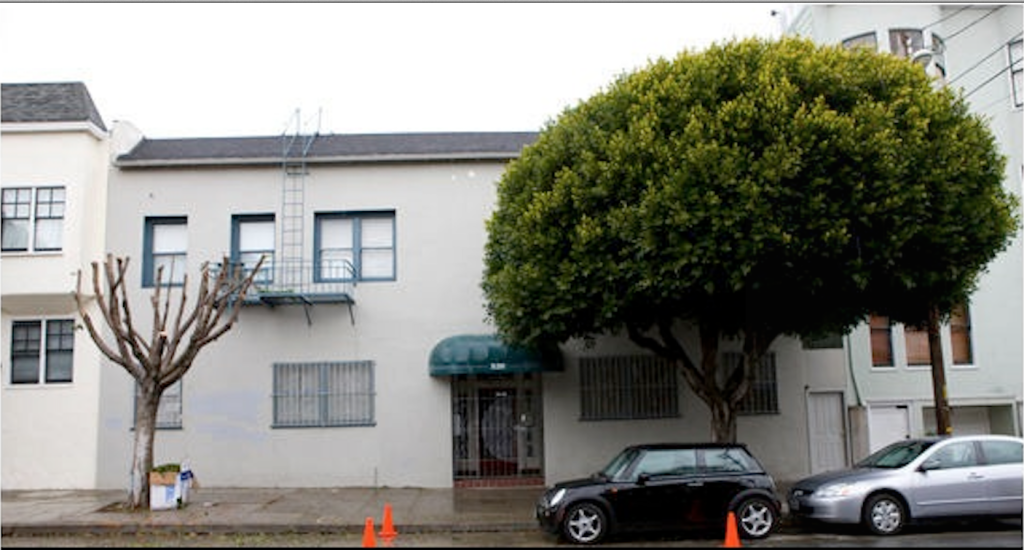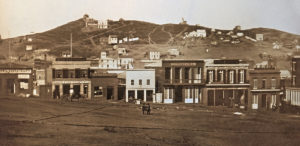The city of San Francisco is planning to shift more street trees into the hands of private property owners, despite evidence that the city’s tree canopy has suffered since the transfer policy began three years ago.
San Francisco’s Department of Public Works (DPW) explained its controversial plans on Monday at a packed room in San Francisco’s City Hall at a hearing of the Land Use and Economic Development Committee.
“DPW is unable to take care of all the trees,” said Carla Short, an urban forester at DPW.
After major budget cuts in 2007, the city’s 11 arborists couldn’t keep up with the normal pruning cycle of every 3 to 5 years, and instead dropped the frequency to once every seven-plus years. Then, in 2011, amidst a continually dropping budget, DPW announced it couldn’t afford to maintain the city’s 105,000 street trees anymore and laid out a so-called “relinquishment plan” to transfer responsibility for an initial 22,000 trees to adjacent private property owners.
Today, the city maintains one-third of San Francisco’s street trees, and is planning to transfer another 14,000 to property owners within the next three years. The rest will be maintained by other state agencies and the city, which will continue to maintain a small number.
Before transferring a tree, DPW typically would perform inspections to make sure the tree is healthy, but at the moment officials say there isn’t even the budget to do that.
“Our goal was to transfer 5,000 trees this fiscal year, but it doesn’t seem that we’ll be able to do so,” Short said.
This means that the transfer process will take longer than three years, said Short. In the meanwhile, a lot of trees could die due to poor maintenance. Property owners don’t have a choice to take on the trees, nor does their capacity to do so matter in DPW’s policy.
“Some owners do an amazing job in taking care of the trees, some others refuse to do it, whereas some have no idea that the maintenance of the tree outside their home is their responsibility,” said San Francisco Supervisor Scott Wiener, who from the beginning has been a strong critic of the city’s relinquishment program.

Most of the trees are at least 20 feet tall and can grow to a height of 30 feet. Pruning them is best done by professionals, Short said, which can cost between $250 to $900, depending on the size of the tree; pruning needs to be done every one to thee years. Adding to the cost are upwards of $1,000 a year in repairs to damaged sidewalks, curbs and sewers from growing tree roots, as well as tree replacement. The relinquishment program makes no exceptions for the elderly or low-income individuals, and the city also provides no support for property owners who happen to have big trees in front of their homes, which require expensive maintenance.
“When a tree falls in the forest nobody is around to hear it, but when a tree falls in a city then it is a serious problem,” said Supervisor David Chiu, who said the relinquishment program poses a significant threat to public safety.
At the hearing, Chiu showed images of trees that had collapsed in San Francisco due to improper maintenance. In various instances, trees had blocked streets, damaged cars, and had threatened the safety of pedestrians in popular neighborhoods like North Beach and Telegraph Hill.
“The next tree that collapses could result to serious injury,” Chiu said.
The responsible property owner is liable for damages or injuries caused by tree collapse.
San Francisco’s tree canopy amounts to 13.7 percent of the city’s land area, which is considerably below the national average of 22 percent. It is smaller than Chicago’s 17 percent, Los Angeles’ 21 percent and New York City’s 24 percent.
Friends of the Urban Forest (FUF), a nonprofit forest advocacy organization, believes that the relinquishment program is causing San Francisco to lose more and more trees. He puts the number at approximately 12,000 trees since the DPW policy went into effect three years ago, in large part a result of increased tree mortality and the minimal replacement of new trees.
“Unfortunately we don’t know exactly how many trees we are losing,” said Dan Flanagan, FUF’s executive director.

Flanagan said he believes that trees maintained by the city tend to be larger and healthier, and should stay in city hands. To that end, Friends of the Urban Forest, backed by DPW and the Urban Forestry Council, will fund a study to evaluate whether an annual parcel tax (to be used for maintenance of street, park and school trees) would allow the city to retake responsibility for its 105,000 street trees, and expand plantings to 50,000 new trees over the next 20 years. The tax would cost an annual average of $50 annually per property owner, and would increase for those whose linear curb footage exceeds 30 feet. Property owners would have no other maintenance or liability costs.
Officials said that the Board of Supervisors is still weighing its options regarding the parcel tax. If FUF’s feasibility study demonstrates that the parcel tax could be effective, then FUF would try to put the issue on the 2016 ballot.
“This is not going to be an easy fight,” Flanagan said. “To win, we need 67 percent of the public’s approval, and that’s a lot of votes.”


